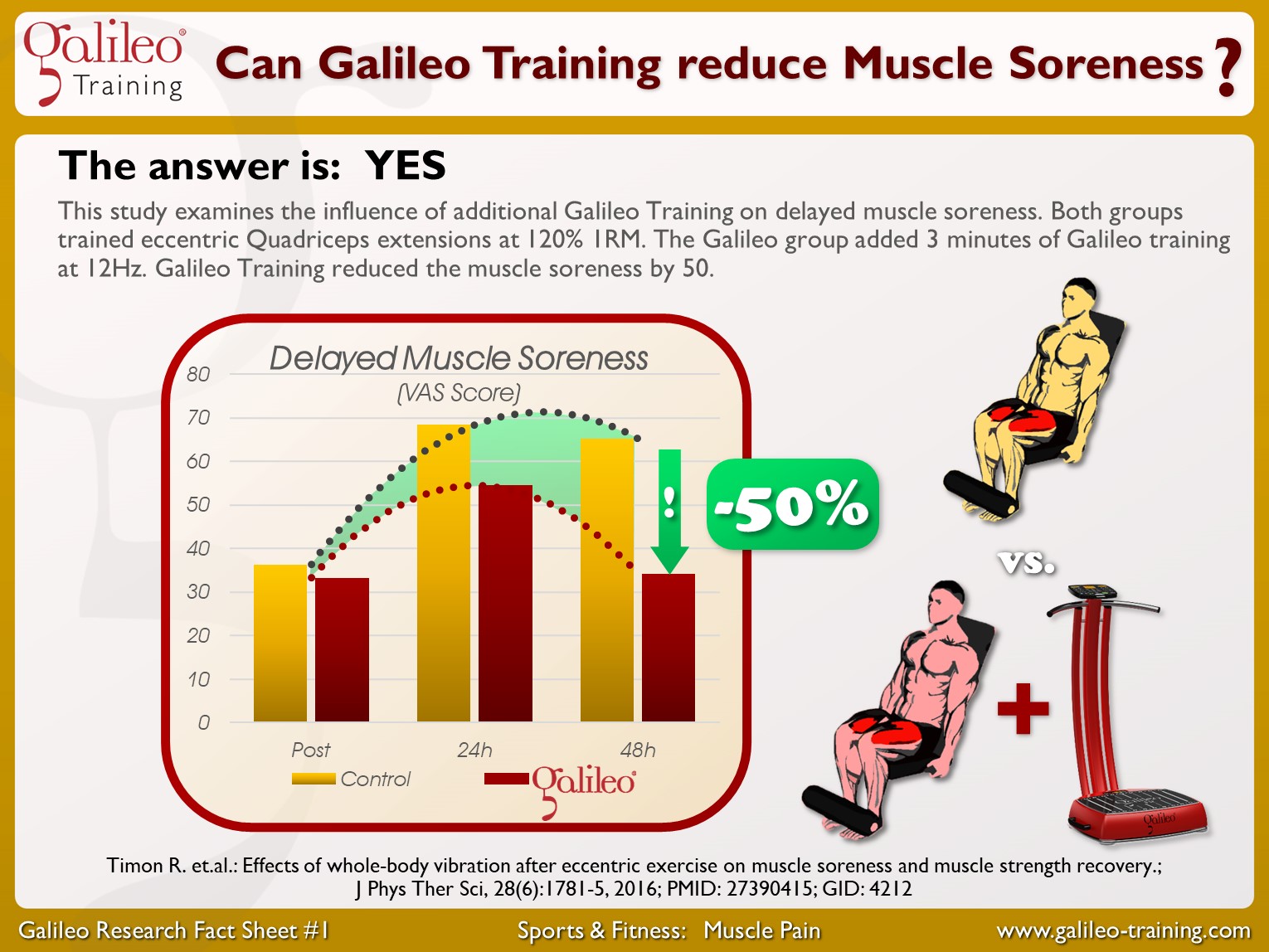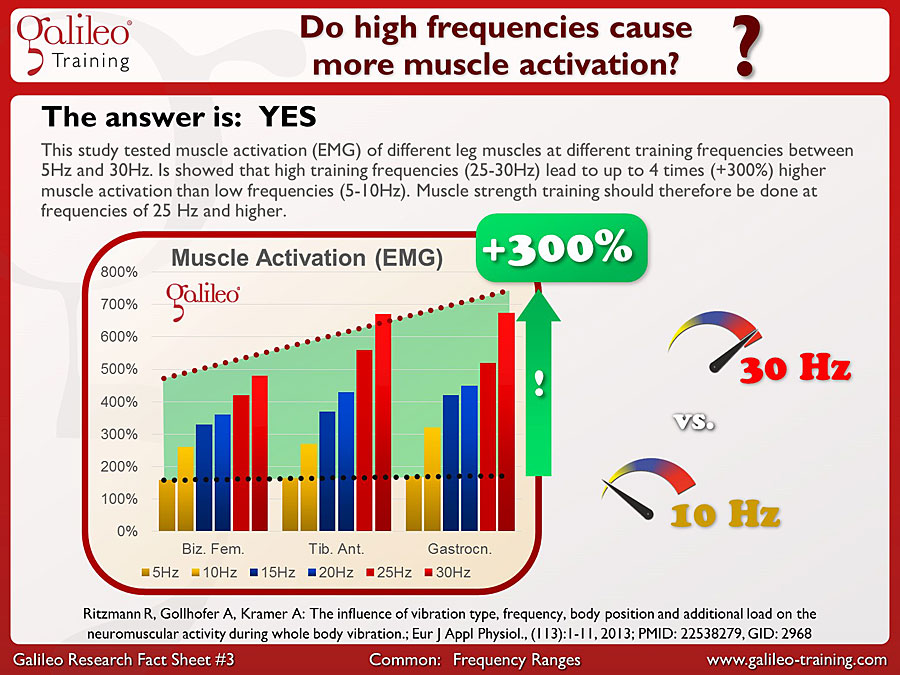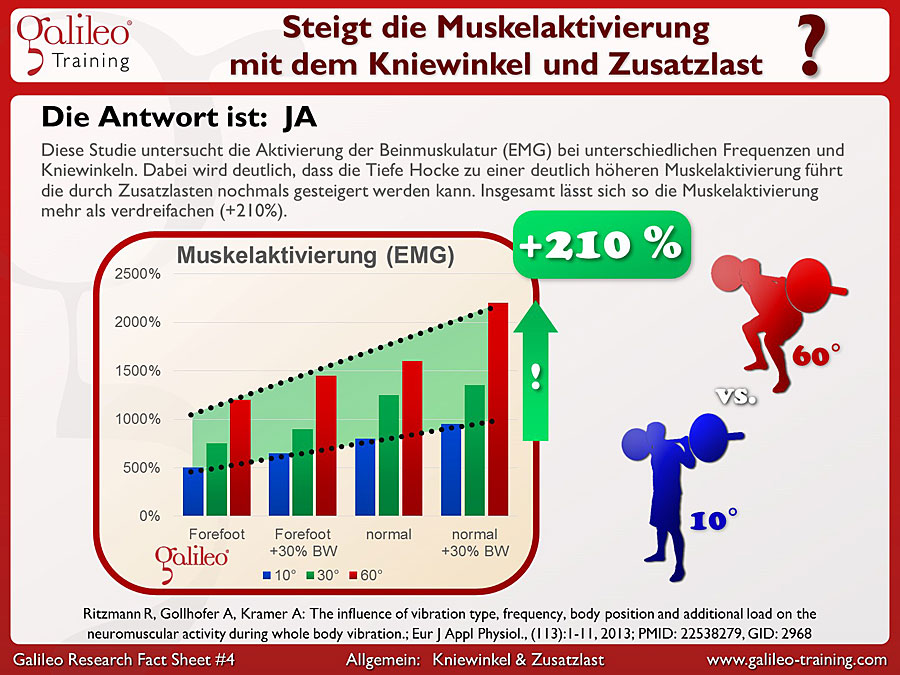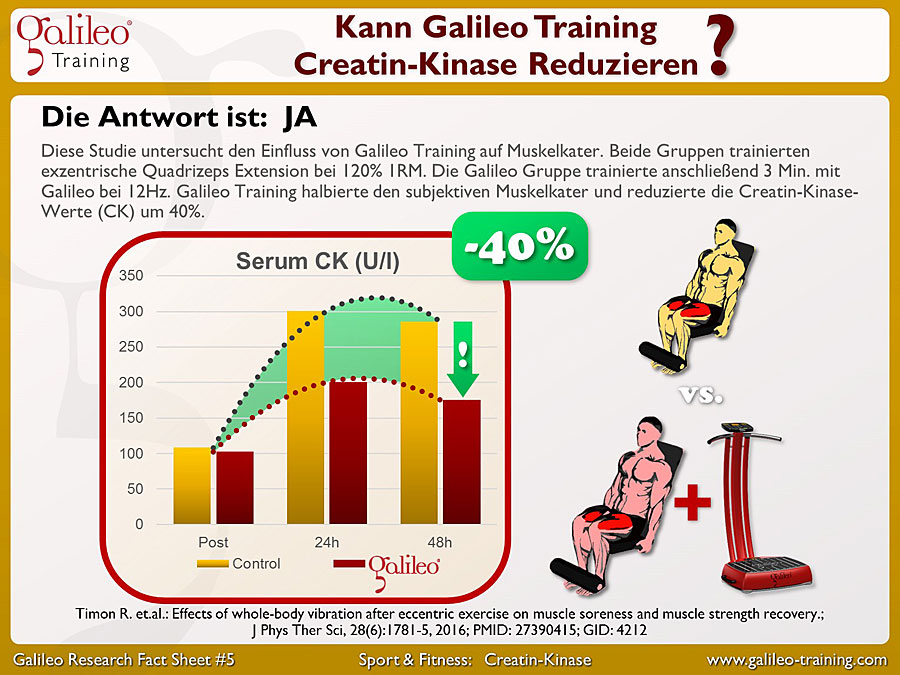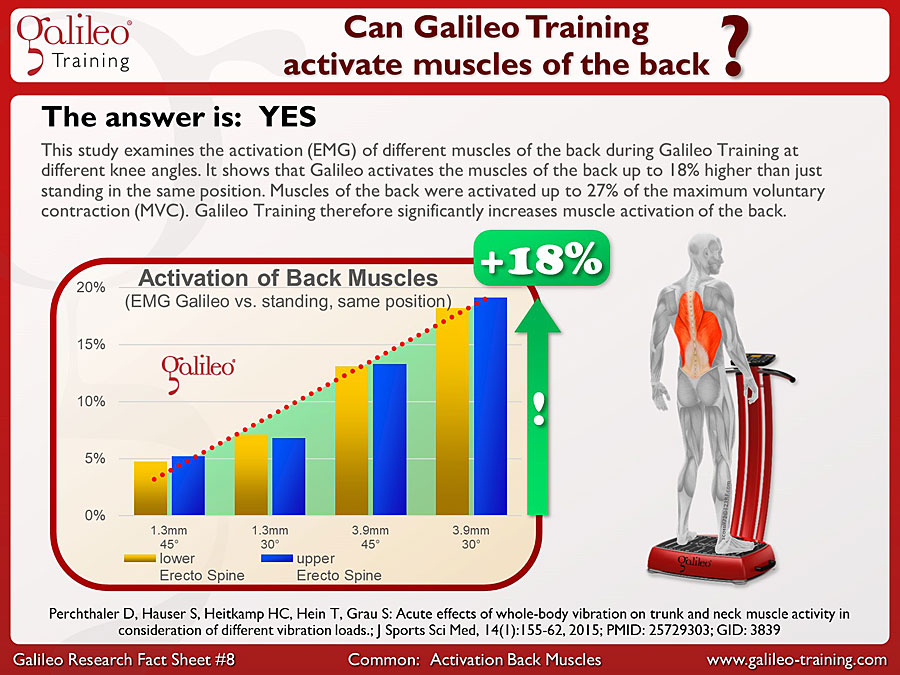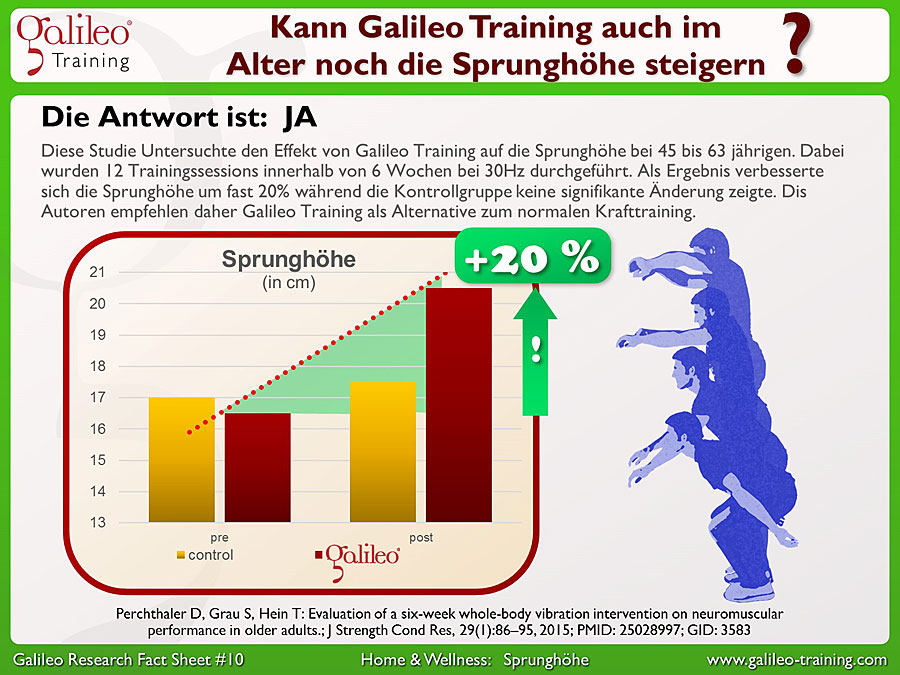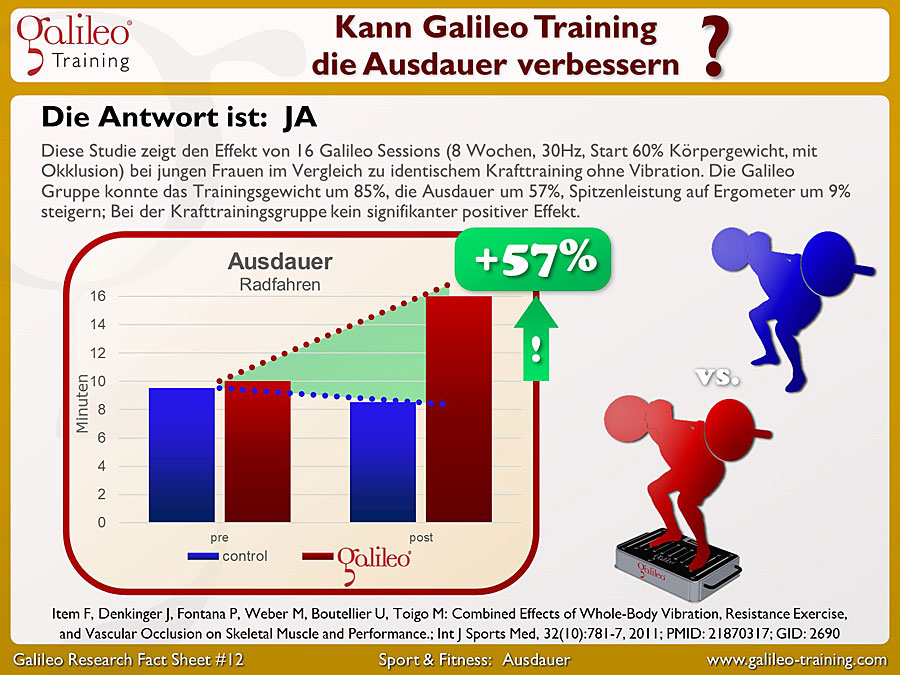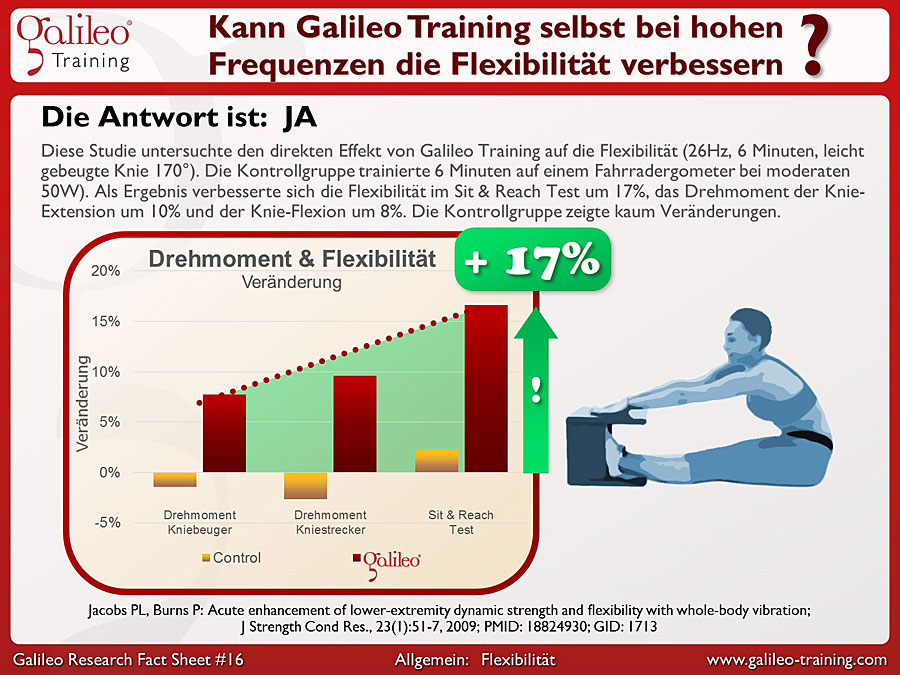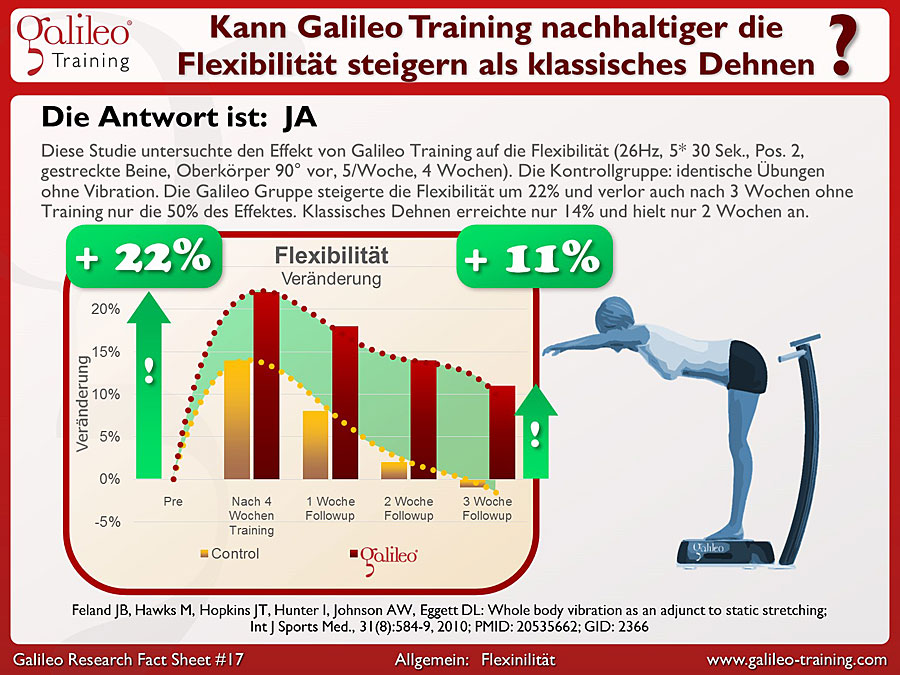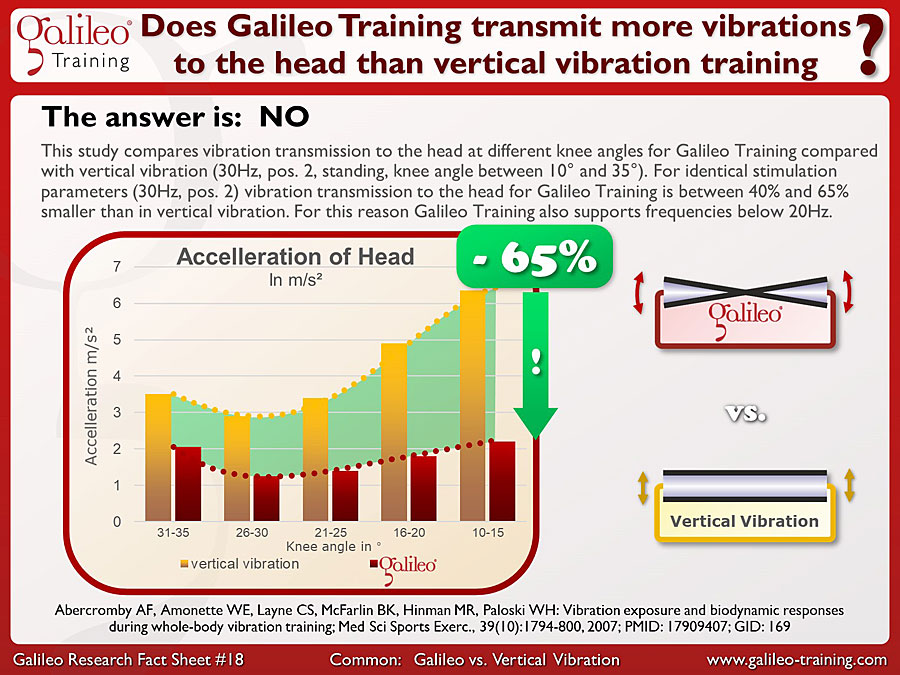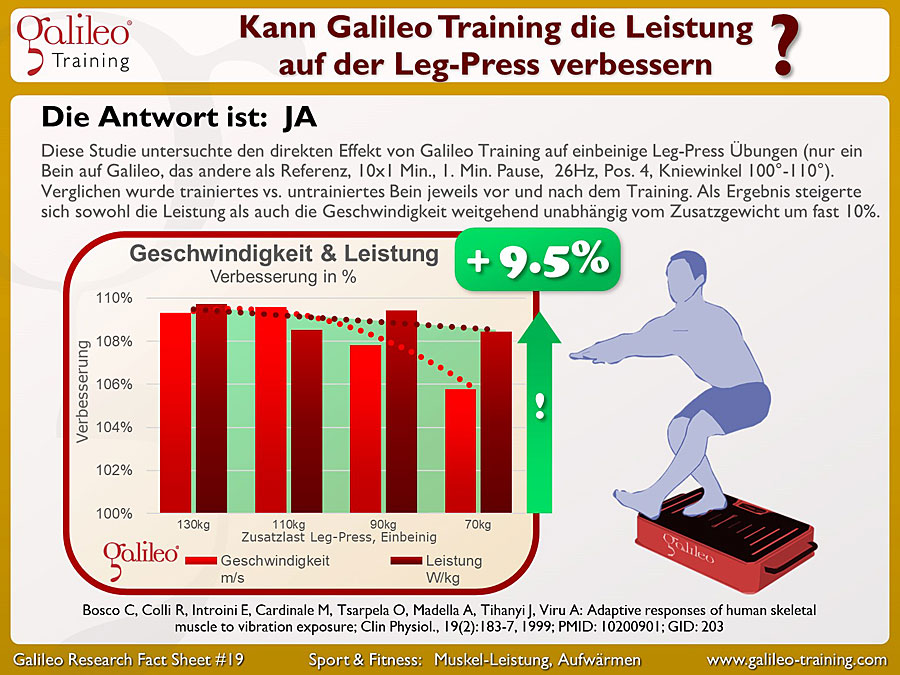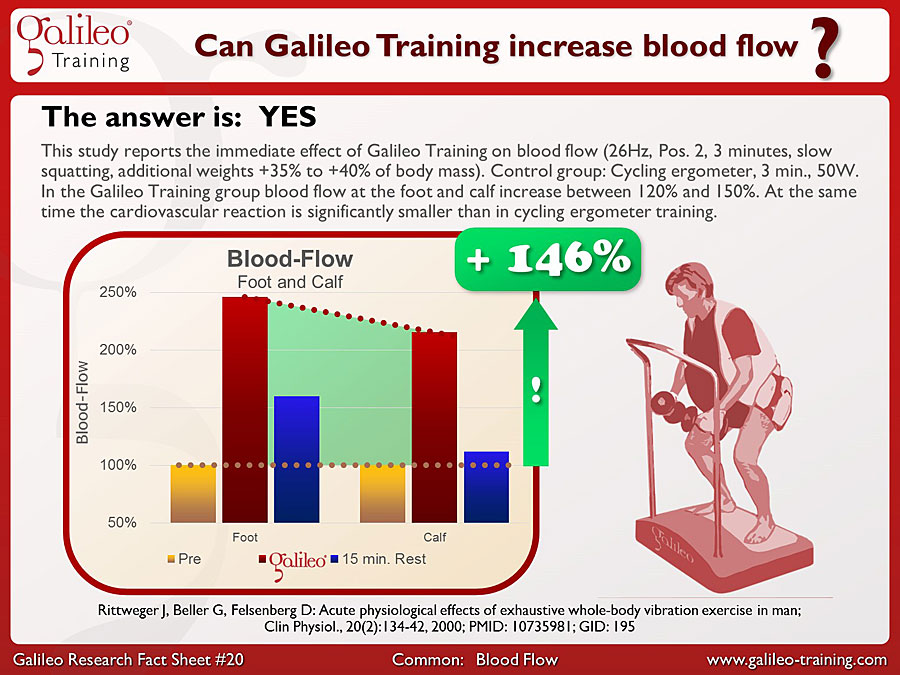Side Alternation - Functional Principle of GALILEO® Training
Galileo® – the side-alternating original Made in Germany.
The principle of Galileo standing devices is based on the natural movement of human gait. The Galileo training platform works like a seesaw with variable amplitude and frequency due to its side-alternating movement mode, which stimulates a movement pattern similar to the human gait.
The rapid rocking motion of the training platform causes a tilting motion of the pelvis just like walking, but much more frequently. To compensate, the body reacts with rhythmic muscle contractions alternating between the left and right sides of the body. From a frequency of about 10 hertz, these muscle contractions are not voluntary, but reflex-controlled via the so-called stretch reflex, which activates the muscles in the legs, abdomen and back all the way up into the core.

Reflex-based activation of the muscle chain
The number of stretch reflexes per second is determined by the adjustable stimulation frequency. If, for example, a stimulation frequency of 25 hertz is selected, 25 contraction cycles occur each second in the flexor and extensor muscles. A training session of 3 minutes at 25 hertz thus corresponds to the same number of muscle contractions per leg, similar to a walk of 9,000 steps.
The vibrations generated by the Galileo training platform can be easily changed in amplitude and frequency independent of body weight.


Do you have questions about our products or would you like to purchase a product?
Get advice from our experts. Simply arrange a phone-call to answer your questions.
Galileo® Training
The Galileo® story
From bone research to an innovative training concept for young and old.

How it all began
The side-alternating original – Galileo was actually the world’s first side-alternating vibration training device. The first patents for Galileo systems, which have since expired, were registered by the company’s founder Hans Schießl as early as 1996. The background to the invention was his findings from his collaboration with international osteoporosis researchers. Here he quickly realised how crucial muscle function is for strong bones. A conclusion that was far ahead of its time.
One of the first studies* with Galileo equipment in 1998 also coined the term vibration training (in English: Whole Body Vibration Training or WBV), on which Galileo vibration therapy is based and which gave this new form of training and therapy its name.
*) Bosco et. al The Influence of Whole Body Vibration on Jumping Performance, BoS,1998;15/3:157-164

Over 25 Years of Experience
Galileo thus has over 25 years of experience in vibration training and the resulting vibration therapy. Variations of vibration training or vibration therapy are also called acceleration training, vibration training, low-intensity vibration (LIV) or stochastic resonance training or resonance therapy (SRT). However, a clear distinction must be made between training and therapy equipment.
The main mechanical differences* between the various devices and methods result from the type of movement of the plate (side-alternating (Galileo), vertical, horizontal rotation or random), the maximum deflection (amplitude or stroke = amplitude * 2) and the vibration frequency. In addition, a distinction must be made between training equipment and therapy equipment. Depending on the type of movement used, there can be major advantages and disadvantages.
*) Rittweger, Rawer et. Al: Manual of Vibration Exercise and Vibration Therapy, Chapter 3: Design Principles of Available Machines, Springer 2020; ISBN: 978-3-030-43985-9
Side alternation
The functional principle of Galileo® Training
Simulation of the human gait
The side alternation - The movement pattern for which the human body was optimised by nature.

Side alternation
The simulation of human gait through the rocking movement distinguishes Galileo training platforms from other platforms with vertical up and down movement as a training method based on a physiological type of movement. Due to this side-alternating movement during Galileo Training, the spine is stimulated by a slight lateral tilting of the pelvis in a physiological movement. Training platforms with vertical up and down movement, on the other hand, compress it continuously.

Benefits for the application
In all their movements, people strive to keep their heads in a still and upright position, as their sense of balance and visual system perform better when they are at rest. Due to the design, only minor vibrations are transmitted to the head with Galileo floor units, as the platform only simulates human gait and the body can keep the upper body and head largely still.
Gentle, reflex-based training
The safety aspect
The side alternation - The movement pattern for which the human body was optimised by nature.

Side alternation
Since during training with Galileo on standing equipment similar stimulus patterns are used as during walking, Galileo can be used to excellently stimulate not only the basic muscle function itself but also the interaction between individual muscle parts - i.e. their coordination. This results, among other things, in an increase in muscle power. Especially in old age, muscle power is a decisive factor in preventing falls, which can cause fractures of the femur, for example.

Safe & effective
Galileo Training is also excellent for older people due to its low stress (work) on the cardiovascular system. During training with Galileo, the entire muscle chain of the legs up to the torso can always be activated. Emphasis on individual muscle groups can be easily varied through posture and body stiffness.

Do you have questions about our products or would you like to purchase a product?
Get advice from our experts. Simply arrange a phone-call to answer your questions.
Parameter
What can be changed with Galileo® Training
These three parameters influence the training goals and intensity of Galileo Training.

Frequency
The frequency in Hertz (= oscillations per second) is adjusted on the device and must always be selected according to the training objective of the respective exercise. Low frequencies can be used for mobilisation, medium frequencies for training muscle function and coordination, and high frequencies for increasing muscle power and endurance.

Amplitude
The amplitude, i.e. the deflection of the training platform from the rest position upwards or downwards, can be selected easily and continuously via the foot position. The wider the foot position, the more intense the training. The stroke (peak-to-peak value), on the other hand, is the maximum deflection (difference between highest and lowest position) and thus corresponds to twice the amplitude.

Posture
For most applications of Galileo Training, stretch reflex-based activation of the muscle chain is used. However, the stretch reflex is only triggered in muscles that already have minimal pre-tension. This is the reason why the posture adopted on the device can be used to focus muscle stimulation on a wide variety of body regions.
You would like to know more about the background of Galileo® Training ?
Choose one of the following topics:
Frequency ranges and their effect
Galileo® Basic Exercises
Galileo® Training Fact sheets
Research results on the application of
Galileo® Training. Get fit - stay fit.
Let Galileo® Training convince you!
Numerous scientific publications show the effectiveness of Galileo Training.
Benefit from the knowledge gained from over 25 years of experience and from over 500 scientific publications on Galileo worldwide.
